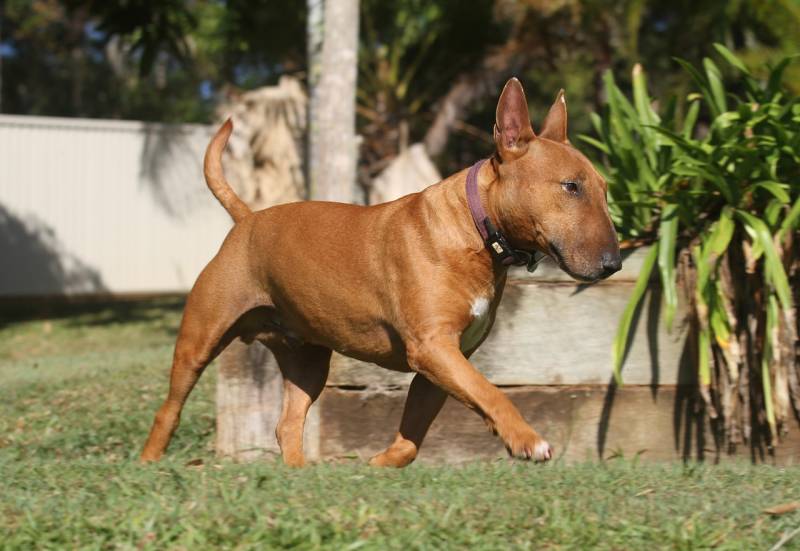Quick Navigation

Puppies can win your heart in no time; without them, you would feel incomplete.
For your love for your puppy, it is essential to keep them protected. This calls for training your pup to wear a collar.
The law also requires a dog to wear a collar with a tag incorporating the owner’s information.
Making your puppy wear a collar is the best form of showing ownership. However, getting your pup used to this is often not easy.
Stay tuned to learn more about how to get a collar on your puppy’s neck.
Appropriate Age For Puppies To Wear Collars
It is recommended that puppies wear a collar as soon as they reach 8 – 9 weeks. This age is when they begin their journey toward adulthood and start perceiving things better.
If you got your puppy from a well-known animal breeder, he might have acclimated the puppy to collars.
The first and most critical step towards grooming your puppy is introducing it to walking on a leash.
For a puppy growing into an adult dog, obedience and control are the two traits it must know by heart. Only then can one guarantee the well-being and contentment of their beloved puppy.
Puppies Resisting Wearing Collars
A puppy might resist wearing a collar due to the fear of the leash harming or strangling it.
Perhaps, it is baffled whether the collar is good for it; It is normal for your pup to be reluctant when shown the leash.
Signs of your puppy resisting leashes could be crying, whining, jumping wildly, wriggling their head, or even running out.
If a canine expresses an intense resistance to a collar or leash, he must be flooded—which means facing the things one fears. Flooding might have two results; either the pup overcomes its fear of that specific thing, or the fear increases and overtakes its mind.
In the latter case, puppies may feel stressed, and it is suggested to allow your little pup some time and space to adapt to the situation.
Puppies Scared Of Wearing Collars
Most puppies out there wouldn’t be very happy wearing a collar. They would resist, cry, and react out of fear. These reactions are mainly triggered due to the following two reasons:
- Either the puppy has worn it previously and has undergone an unpleasant experience due to which it is now afraid of wearing it.
- The puppy might never have seen it before and is confused about what the collar is for.
In both ways, it is suggested to make the puppy feel positive about wearing the collar. This can be done by allowing it time, space, and comfort.

Should Puppies Sleep With Collar On?
Putting a dog leash on when the puppy is sleeping is very dangerous. The collar can get stuck, putting your pet at risk for strangulation and suffocation.
The collar is not designed to be worn 24/7, especially when a puppy sleeps. If not removed at night, the leash could cause the fur to break off, leading to neck scars and infections.
It is risky to let puppies sleep with their collar on because when they get wet, the leash can cause diseases like cold and flu to the puppy. A perfect alternative is to get your puppy microchipped, so you can quickly locate the puppy in case of a night emergency.
Training A Puppy To Get Comfortable Wearing A Collar
Here are some easy tips and tricks to get your puppy to wear a collar with ease:
- If you have a new pup, give it time to become familiar with its new family members before you try to put on a collar. Please give it a house tour and make it feel at home. Never force a canine to wear a collar on the first day. After a day or two, when you think the puppy has gained enough comfort, only then try to get the collar on its neck. If it resists, stop, give it a treat, and never force it.
- Try to get the collar around its neck before giving it food so that its hunger motivates it to follow your rules.
- Never try to quiet down the puppy when it’s whining, scratching at the collar, or doing other things to get rid of it.
- Ignore its fuss-making activities and distract it with food, toys, or anything it likes.
- Over a few days, keep trying to get the pup to wear the collar. Gradually, it will become used to it and will acknowledge its presence.
- Make it a habit to offer it a treat whenever you attempt to get the collar on.
- Before beginning collaring, make the puppy see and sniff the collar a few times so that it becomes familiar with the collar and ensures it is not harmful.
- Attach the leash to the collar when the puppy begins to feel comfortable about it. Leave the leash with the puppy and let it play around.
Putting a collar on your puppy requires a lot of patience, consistency, and kindness. Try to be as polite with the puppy as possible, and avoid an aggressive attitude.
Types And Sizes Of Collars And Leashes
The types and sizes of collars can vary from puppy to puppy. A lightweight and small collar would work best for a puppy. The collar should still be large enough to cover the neck of the puppy. However, make sure it’s not too loose or too tight.
The standard collar should be 2-3 inches bigger than your puppy’s neck. Collars of this size keep your pups from suffocation while still not getting out of their heads.
The most common type of collar is the flat collar. Almost every pet you see wears this type of collar.
Other varieties include dog harnesses, including back and front clip harnesses, martingale, headcollar, or prong collars.
The most convenient of these is the front-clip harness. It sits right at the bottom of your puppy’s neck and the top of its chest.
It works best if your pup needs some pulling to stay in control. Also located right between its neck and chest, it causes no harm to the puppy even if removed harder. However, a flat or head collar should suffice in most cases.
When buying a leash, purchase one that is lightweight and thin. It will make the entire experience of wearing a collar easy and less terrifying for the puppy. The top choices for leashes are light ropes or nylon webbings.
Advantages And Disadvantages Of Dog Collar
The fundamental purpose of wearing a collar by your puppy is control. It is an activity that highlights authority and obedience.
The advantages that collar offers are as follows:
- The puppy understands that he is obliged to obey you and stay with you.
- The owner can quickly identify the puppy when walking in a public place.
- Less chance of being lost or stolen.
The disadvantages of making a puppy wear a collar are such:
- Slight pulling of the leash can damage your puppy’s windpipe and cause difficulty in breathing.
- Pulling the leash makes the puppy think he is supposed to pull too, and when it stretches, which may result in some trouble.
Conclusion
Every puppy owner wants their dear pup to remain safe and secure. Collars and leashes serve this purpose perfectly; they symbolize obedience, control, and safety.
However, you must be aware that it takes time for a puppy to get used to a collar. The process of collaring your puppy is always demanding, tiring, and sometimes dangerous, as they might fight you back when you are scared.
Therefore, the next time you get that collar around your puppy’s neck, use the slow and timely approach, and soon, everything will be settled. Happy petting!

Purrfect n’ Pawesome is the brainchild of Amanda, who has been into researching and writing about pets to help other pet parents in nurturing their adorable pets. Currently, she runs Purrfect n’ Pawesome along with her team of experienced and dedicated pet experts. Along with being an awesome writer and entrepreneur, Amanda is a cat mom to two innocently spoiled cats, Balanca and Scruffy.
She has been writing about pet care and nurturing and wants to share her readers’ experiences, learnings, and knowledge.
Over the years, she had the opportunity to work with various pet owners having multiple breeds, and that exposure gave her experience and the lessons of a lifetime.
Her family, her entire universe revolves around her two cats, who give her endless support and inspiration to move ahead with her objectives in life. Amanda is a live example of a balanced approach to all parenthood questions we all face in life.






